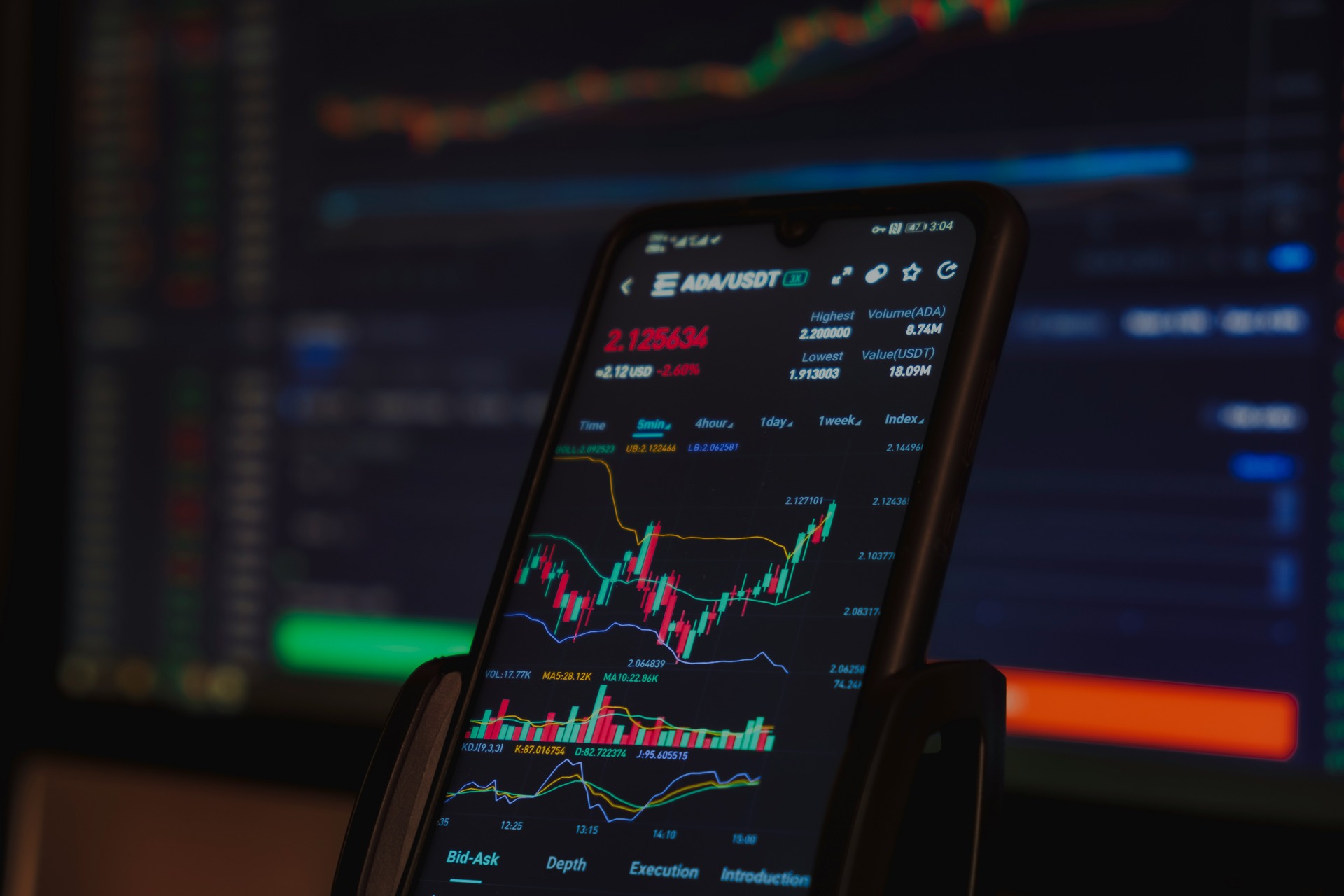Europe's Quiet Comeback
31 October 2025
Why the Continent Could
Outshine US Equities
Can European Stocks Stay in
the Lead?
For investors, the Trump 2.0 administration's roadmap hasn't gone as planned, with US stocks cooling due to a sluggish economy, changing economic policies, and increased AI competition from China. The S&P 500 and Nasdaq indexes have dropped by -3.20% YTD and -7.80% YTD, respectively, since Trump's inauguration on January 20 due to the continued high level of political and economic uncertainty. Since the beginning of the year, consumer sentiment has also declined, and domestic manufacturing appears to be losing some of its pace. The Fed's hand is somewhat tied to lowering rates in the near future because tariffinduced inflationary risks are still high.
Until recently, the US was the only option for investors. However, given the continued policy uncertainty, investors should be on the lookout for significant developments overseas, particularly in countries with significant room for fiscal and monetary expansions. In light of this, we think Europe is appealing for a number of reasons.
Why Europe Looks Appealing
Despite its modest growth, Europe's economy is doing well overall. After a 0.1% increase in 2023, real GDP in the eurozone was up 0.9% year over year and remained steady quarter over quarter in the fourth quarter of 2024.
The labour market remains strong, with the eurozone unemployment rate at 6.3% in December 2024, close to an all-time low. Wages growth remains robust, at 4.4% year-over-year in the third quarter of 2024.
Europe's inflation situation appears to be benign as well, with annual consumer prices increasing by 2.4% in the year ending in December 2024—much less than the US's 3.0% increase. The European Central Bank can maintain more accommodating monetary policies as a result. The ECB lowered its deposit rate this month from a peak of 4.0% in early 2024 to 2.50%. By the end of 2025, investors anticipate that ECB benchmark rates will be between 1.75 and 2 percent lower than the current CPI inflation rate. Since the European business sector depends more on bank funding than the US does, these lower rates should contribute to its growth. A low-cost euro might also help the economies of the Eurozone.
The region as a whole has fiscal room to spend. The eurozone's gross government debt-to-GDP ratio is estimated by the IMF to be 73.9%, down from 76.4% ten years ago. This stands in contrast to the US, the UK and Japan all of whom have seen a sharp increase in this ratio over the past decade compared to eurozone. This allows governments across Europe to boost economic growth through fiscal spending in certain areas.
European countries have pledged to make significant investments in strengthening NATO defence expenditure pledges, while the United States is considering withdrawing its support for the alliance. This could take total defence spending from roughly 2% of gross domestic product to 3.5% over the next several years. Defence spending in the region might reach EUR 1 trillion, which would help the defence and aerospace sectors as well as the overall economy.
Furthermore, the area will need to contribute and invest in Ukraine's reconstruction. It is estimated that over $400 billion in additional engineering and construction work could result from the restoration initiatives over the course of the next ten years, according to some estimates. Lastly, European consumers remain in a healthy shape with household saving rates that are nearly 4x times that in the US (4.1%).
European Valuations and Market
Positioning
Tech companies are underrepresented in European indexes, as a result, it has missed out on the surge in US mega-cap tech businesses over the past year or so but has also not suffered as much as the US in the last three months.
The strongest case, however, for European equities is its cheap valuations. The MSCI Europe ex-UK had a forward P/E ratio of 14.7 times at the end of January, compared to 21.8 times for the S&P500. Naturally, compositional effects account for a portion of the valuation discount, as highly valued technology stocks are far more heavily weighted in the S&P 500 than in the MSCI Europe. Even after considering this, the P/E ratios of the ten MSCI Europe sectors are all far lower than those of the S&P 500. Additionally, the region offers a larger dividend yield— 3.3% as opposed to 1.3% for the S&P 500.
Implications for Investors
Europe has outperformed the US in terms of positive economic surprises. The purchasing managers' indices (PMIs) for the region and the increase in manufacturing activity over the last three months have shown improvement in hard data. There have been a lot of favourable profit revisions in the region this year. Additionally, return on equity (ROE), a measure of bank profitability in Europe, is reaching all-time highs. Over the last six months, European banks have performed better than most major asset classes.
The fiscal and monetary policy environment also seems to be favourable. A more aggressive fiscal strategy that promotes economic growth and corporate profitability could result from the possibility of significant political change in major nations like the UK, France, and Germany. All things considered; Europe clearly possesses the collective capacity to accelerate its growth; it simply needs to set out on the path.
The prospect of peace in Ukraine after three years of violence strengthens the argument for long-term prosperity in Europe. There is a hope that a resumption of natural gas deliveries from Russia, potentially relieve inflationary pressures on energy prices in several key industries lowering inflation expectations, and helping rates decline in the event of a ceasefire, as Russian supply returns more freely to global markets.
Despite this, the European landscape has improved significantly since the beginning of the conflict in Ukraine. Recent developments from the White House and the Munich Security Conference about the US's stance on peace negotiations with Russia may be seen as a multigenerational change in global allegiances. Material uncertainty still exists since there is still much to be decided and because US policy views appear to be defined in real time. The possible US tariffs on European goods entering US present an extra risk to European exporters.
The economy of Europe continues to load slowly but steadily. Gains in Europe could be a supplementary source of returns for the portfolio, since the continent continues to house prominent companies in the global market with strong brands and solid balance sheets in sectors including defence, engineering and consumers.
Disclaimer
This document has been produced solely for information purposes by WealthFusion Limited with the greatest of care and to the best of its knowledge and belief for use by its legal entities. The information contained herein constitutes a marketing communication and should not be construed as financial research or analysis, an offer, a public offer, investment advice, a recommendation or solicitation to buy, sell or subscribe to financial instruments and/or to the provision of a financial service. Further, this document is not intended to provide any financial, legal, accounting or tax advice and should not be relied upon in this regard. The information provided herein is for the exclusive use of the recipient and may not be reproduced, disclosed or distributed, neither in part nor in full. This document is not directed at, or intended for distribution to or use by, any person or entity domiciled or resident in any jurisdiction where such distribution, publication, availability or use would be contrary to applicable laws or regulations of such jurisdictions. Any investment decision must be based on a prior study of the offering documentation and in particular the terms and conditions and key information documents. This information can be obtained on request and will be free of charge from your relationship manager. The content of this document is intended only for persons who understand and are capable of assuming all risks involved. This document has been prepared without taking into account the investor classification, specific investment objectives, financial situation, tax situation or the needs of the recipient. Products and services are not suitable for all investors and may not be available to investors residing in certain jurisdictions or with certain nationalities. Before entering into any transaction, the recipient should consider the suitability of the transaction to individual circumstances and objectives. WealthFusion Limited recommends that investors independently assess, with a professional financial advisor, the specific financial risks as well as the legal, regulatory, credit, tax and accounting consequences. Investment products may be subject to investment risks involving, but not limited to, possible loss of all or part of the principal investment. This document is not intended to be exhaustive on all risks related to financial instruments. Therefore, the recipient should consult the specific product documentation and discuss any queries with their relationship manager prior to entering into an investment decision. The information and views expressed at the time of writing are subject to change at any time without notice and there is no obligation to update or remove outdated information. Historical data on the performance of the securities and financial instruments or the underlying assets in this document is no indication for future performance and the value of investments may fall as well as rise. This document is based on publicly available information and data. Although information in this document has been obtained from sources believed to be reliable, WealthFusion Limited provides no guarantee with regard to the timeliness, accuracy or completeness of the information and does not accept any liability for any loss and/or damage, either directly or indirectly, arising out of or in connection with the use of all or part of this information or from the omission of certain information. Recipients should be aware that the terms and conditions and key information documents constitute the sole binding basis for the purchase of investment funds. Some investments may foresee restrictions to target group of investors.
Discover Similar Insights
Every day, our experts deliver fresh insights on trending topics,
sectors and markets to help you stay ahead of the curve.

I Inherited a windfall - it was a blessing and a curse
"If you don't do the personal work of really acknowledging your privilege, understanding your responsibility to redistribute away resources and your power - and so sometimes acknowledging the fact that you're not the best person to make those investment or philanthropic decisions - then, of course, the whole thing doesn't work." “Unfortunately for some other of my relatives who received the money, ended up corrupting their lifestyle and also their mental health, so it wasn't good for them, and that money was wasted." Some $90 trillion (£69 trillion) will be transferred to American millennials

Dividend Stocks – potential to Outshine Bonds in a Low Interest Rate Environment
Introduction As we approach September 2024, a significant shift in the financial landscape looms large. The Federal Reserve, having spent much of the past few y…

Market Correction – What is Ahead for Investors!
Introduction Since November 2023 US stocks have rallied almost 30% until the recent drawdown that started in early April. The S&P 500 was down as much as 5.5% i…

Hotel Tycoon Takes £6m Life Insurance to Shield Business from Inheritance Tax Hike
‘I’m insuring my life for £6m to protect family from IHT raid’ More business owners are seeking policies to protect their assets from ‘death tax’ for after they…